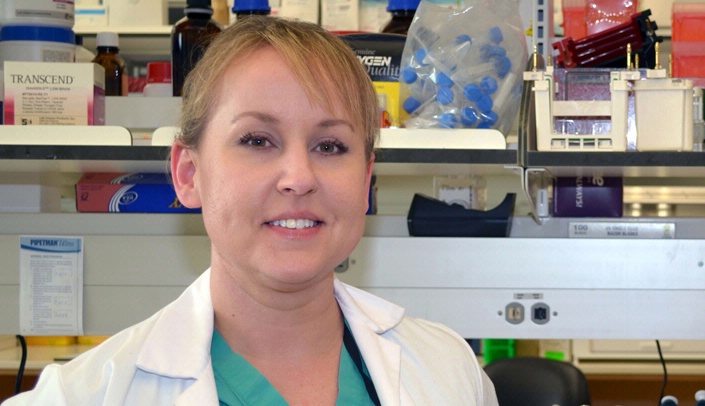The Office of the Air Force Surgeon General has awarded a contract, valued at $1.3 million, to the National Strategic Research Institute (NSRI) at the University of Nebraska, and UNMC will be a collaborator in the project.
The aim of the contract is to advance the new medical treatment process using microbubble oxygenation, an emerging technology to provide oxygen to patients whose lungs cannot function efficiently due to trauma. Microbubble technology provides rapid oxygen delivery and could provide the levels of blood oxygen needed to survive during emergency patient transport from remote environments far from hospitals.
The support of the Air Force will move the research forward in three significant directions across three labs at three universities in two states.
Mark Borden, Ph.D., associate professor of mechanical engineering at the University of Colorado Boulder and inventor of the oxygen microbubbles, will create a process and system capable of large scale manufacturing. Benjamin Terry, Ph.D., assistant professor of mechanical and materials engineering at the University of Nebraska-Lincoln (UNL) will design and develop a medical device that delivers the oxygen microbubbles to patients. Keely Buesing, M.D., assistant professor of surgery at UNMC, will develop injury models for testing the new technique.
Drs. Terry and Borden invented the new way of administering oxygen to patients who cannot breathe.
“Our system transforms the abdomen into a third lung, so to speak,” Dr. Terry said. “Through a method of pumping and delivering oxygen microbubbles into the abdomen while removing dangerous carbon dioxide, the process delivers life-sustaining oxygen to the body’s core which is then circulated to the brain and other vital organs.”
Dr. Borden said the team is taking a “biomimetic” approach — learning as much they can from nature on how to solve the engineering problem of delivering vital oxygen to the body’s tissues.
Microbubbles are tiny bubbles, each one only a fraction of the size of a human hair, that are designed to mimic the alveoli in the human lung by releasing oxygen to the body and simultaneously removing carbon dioxide.
“Each cubic centimeter of microbubble foam contains trillions of individual microbubbles, providing an enormous surface area for the gas exchange process to take place. Once the oxygen has been delivered, the spent microbubbles can be safely removed from the peritoneal cavity. So we do not anticipate any long-term toxicity,” Dr. Borden said.
“Major combat-related trauma produces severe injuries, some of which affect the lungs resulting in life-threatening or fatal lack of oxygen to the body,” Dr. Buesing said. “In some cases, the lungs are so damaged that ventilation is inadequate and injured warfighters must be transported, sometimes long distances, to advanced hospital facilities. In these facilities, the injured can receive treatment to keep them alive while the lungs heal. Unfortunately, during transport, there are few options for treating severe lung failure.”
